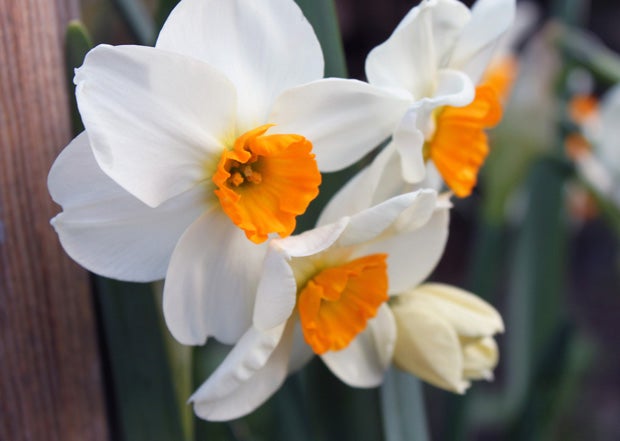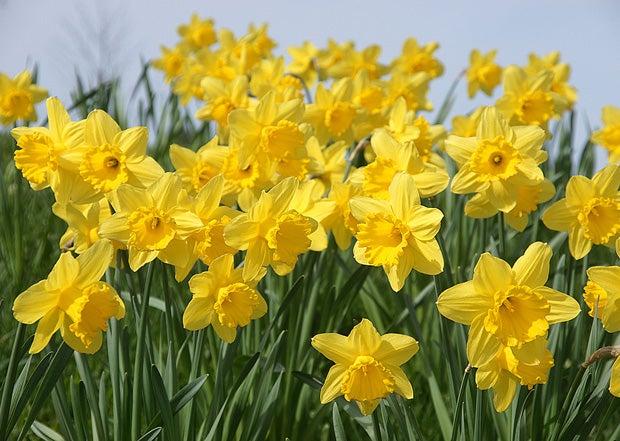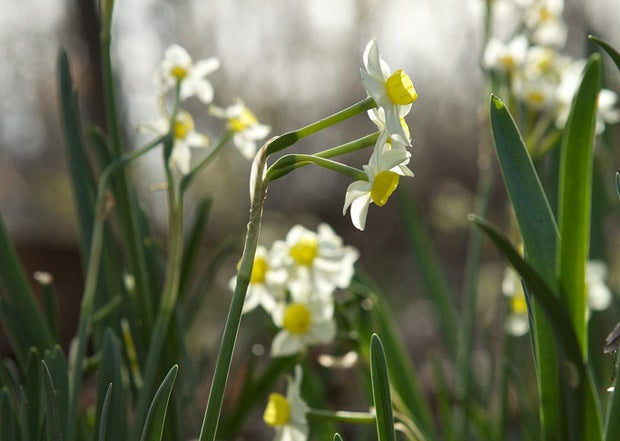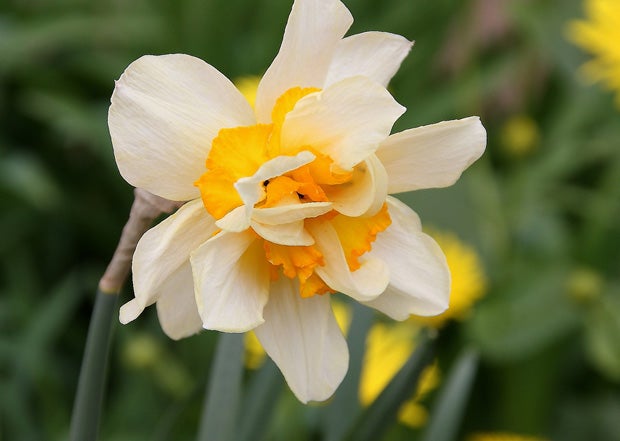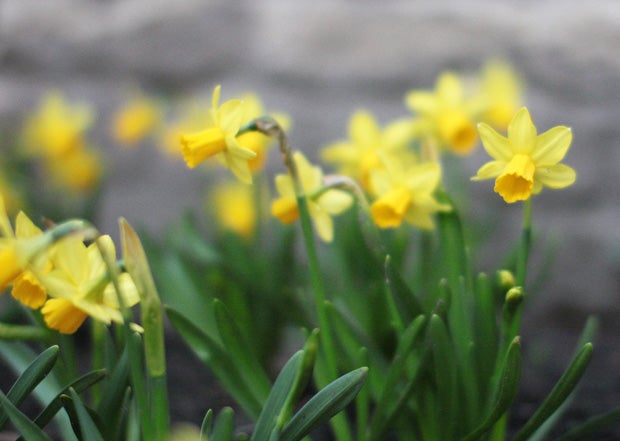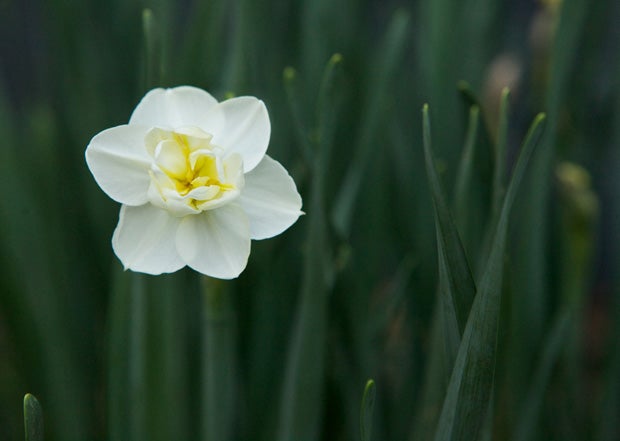Do trees NEED mulch? And can a tree survive severed roots?
ListenHighlights from show for April 13, 2013:
Gardening in cold climates
Christopher from Switzerland is concerned about his heirloom tomatoes not bearing many flowers. Mike explains that many varieties of heirlooms benefit from a long, warm growing season, something that he suspects is problematic in Switzerland’s climate.
“Typically with some of these huge wrangly heirlooms, even here in the states with a hot climate, we don’t get any significant tomato action until mid-August, sometimes late-August, which is why a lot of people cheat and grow some of those short-stature, fast producing tomatoes with lots of fruit early in the season and then work their way up to the big heirlooms. So I think you should take somewhat of a lesson and you should put a couple of short-season determinants. I’m growing Stupice this year — that’s something that I like to joke is named after me — but it’s actually a Russian heirloom that produces lots of tomatoes and is bred to flower and produce fruit in colder-than-usual climates.”
Mike McGrath
-
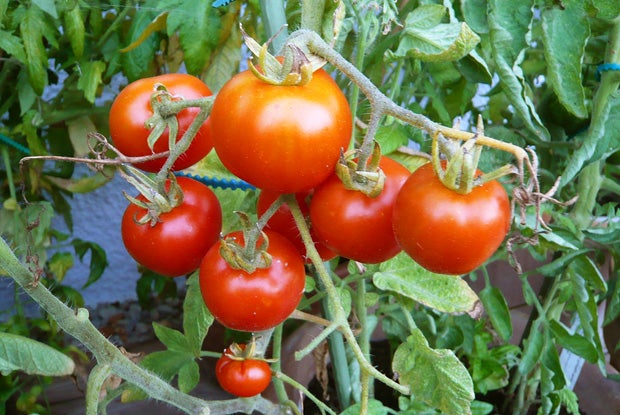
Above: Stupice tomatoes Photo by Flickr user henrysteinbock
Improving garden protection aesthetics
From Branchburg, NJ, Debbie wants to know how to undo the harsh look of her vegetable garden that her husband had surrounded with chicken wire to keep out groundhogs, rabbits, and deer. While using deer wire would have been a better alternative to chicken wire, given its high effectiveness while also being nearly invisible, Mike suggests getting wire that is coated in green vinyl, or simply spray-painting the current fixture to a color that will blend into the background. However, Mike does not recommend growing some type of rosebush to hide the wire, “I would not suggest covering it with a really dense planting material that’s going to interfere with the main needs of your garden which are good airflow and good sunlight.” If there must be some type of plant he would recommend, though, it would be the Scarlet Running Bean, which attracts hummingbirds and butterflies.
“You could grow the same crops better in six inches of perfect soil than in twelve inches of improved soil.”
Mel Bartholomew
Special guest: Mel Bartholomew, founder of “Square Foot Gardening”
Author of Square Foot Gardening, Mel Bartholomew discusses his updated book and answer guide with Mike on the show. “If you’re a beginner you can learn the whole system in about one hour, because you’ll accept and you’ll say, ‘I could do that.’ But if you’re an expert, it takes you about three weeks to learn the system, and of course that’s because it’s so radically different than conventional gardening. For example, we do not use the existing soil,” Mel explains. “You could grow the same crops better in six inches of perfect soil than in twelve inches of improved soil.” Mike agrees that it truly is “all about the soil, stupid.” Along with this basic tenant of Square Foot Gardening, Mel advises against using any pesticides, keeping it organic, not tilling the soil, and using grids in your raised beds. Indeed, Mike admits that having even a single raised bed in your garden reduces pest and disease problems in the plants. Raised beds with grids are not only highly functional and organized, but also highly attractive.
The 10 Basics to Square Foot Gardening, from squarefootgardening.org
- Arrange your garden in squares, not rows. Lay it out in 4′x4′ planting areas.
- Build boxes to hold a new soil mix above ground.
- Space boxes 3′ apart to form walking aisles.
- Fill boxes with Mel’s special soil mix: 1/3 blended compost, 1/3 peat moss, and 1/3 coarse vermiculite.
- Make a permanent square foot grid for the top of each box. A MUST!
- NEVER WALK ON YOUR GROWING SOIL. Tend your garden from the aisles.
- Plant a different flower, vegetable, or herb crop in each square foot, using 1, 4, 9, or 16 plants per square foot.
- Conserve seeds. Plant only a pinch (2 or 3 seeds) per hole. Place transplants in a slight saucer-shaped depression.
- Water by hand from a bucket of sun-warmed water.
- When you finish harvesting a square foot, add compost and replant it with a new and different crop.
Replanting daffodils
Anne from Media, PA inquires about how she could best handle her daffodils once the flowers are dead and the leaves are wilted back. In response to whether she is better off replanting the flower now or waiting for it to completely dry out, Mike encourages her to cut off the flower head and give the plant plenty of full sunlight for the leaves to absorb the solar energy while feeding it with organic plant food. By June, the bulb will be ready for next season and can be brought inside and left alone in a closet or basement until about November when it can be replanted.
Slideshow below: Daffodil varieties
-
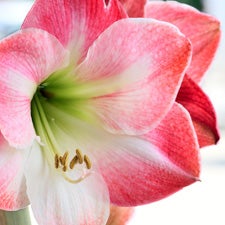
Photo by Flickr user CatDancing
Super Amaryllis
Tom from Denver, Colorado has an amaryllis that finished blooming and now has three new flower stalks coming up. Should he cut the old flowers or leave them be? Mike explains, “You’ve got Super-Amaryllis…this amaryllis just does not know the word quit. So it sounds like you could get another run of flowers completely, which is unusual, but not unheard of.” He advises Tom to cut the old flower stalks and give the plant plenty of bright, but not direct sunshine. He then recommends leaving the pot in a basement for three months before trying to replant it.
Coping with cedar-loving carpenter bees
Albert from Tuckahoe, NJ needs a cure for the mass influx of carpenter bees that are attracted to his cedar wood house every year. Mike’s advice is to get some rotten, 3rd grade cedar blocks and hang them in nearby trees. The next step is to purchase gallons of almond oil, which is available at multiple massage therapist locations. “Who knows how researchers figure these things out, but years ago it was discovered that almond oil repels carpenter bees,” Mike says. “Paint or spray some oil onto the surfaces that they attack. So when the new generation of bees come this year, they will be repelled by the wood of your own home, but they will then use the nesting blocks that you’ve provided nearby.”
-
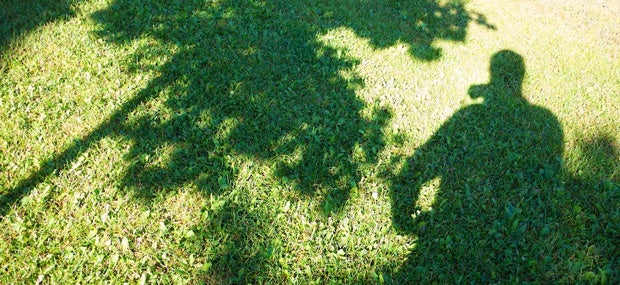
Photo by Flickr user Colin Harris
Question of the Week: Do trees NEED mulch? And can a tree survive severed roots?
I’m about to put an addition on my house that will require a foundation being built approximately six to eight feet from a well-established maple tree that’s about 30 to 40 feet high. The builder says there’s a chance the tree will die when the roots are cut during trenching. Is there anything I can do to help increase the tree’s odds of survival? Many thanks,
Mia in Yellow Springs, OH
Mike McGrath’s answer:
Builders generally like to have nearby trees removed, stump and all, so that they can work with a blank slate. Homeowners generally want to try and keep established trees for their shade and massive beauty. No one can honestly predict with any accuracy whether such trees will survive the construction process, but they often do.
I wanted desperately to keep an adjacent tulip poplar when we built the first big addition on our home, and so I called every tree expert I knew for advice. Most said to just get rid of it, but one guy felt that if only about 20% of the roots would be severed, the survival odds were good. He advised me to make sure the root cuts were sharp and clean and to coat the cut root surfaces with white latex paint before replacing the soil around them, which I did. That was 23 years ago and the poplar—which is exactly five feet from the foundation—is doing fine.
But if I had guessed wrong, the cost to remove the dead tree would have been exponentially higher because of the added difficulty of protecting the newly adjacent structure. And I would no longer have the option of having the stump pulled for fear of damaging the foundation. So weigh your options carefully and realistically.
If you decide to take a shot at preserving the maple, ask the builder to try and limit the use of heavy machinery near the tree as much as possible during construction, make sure the cuts are clean, seal the cut portions with white latex paint and then fill in around the roots with the same soil you removed. Do not feed the tree or use any form of wood mulch near it. Do apply a one inch mulch of compost beginning six inches away from the trunk and water the tree deeply and slowly during any prolonged dry spells, especially over the summer.
Do I really need to mulch around my trees or is it just a matter of aesthetics? I don’t like the ‘mulched circle’ look around the base of trees, so when I planted mine about twenty years ago, I just let grass grow up to the trunks. It looks natural. But recently a tree trimmer said that my trees looked “dry” and that I should dig out the grass and mulch them. Sounds crazy to me. What do you think?
Rob in Clarksville, MD (just outside Columbia)
Mike McGrath’s answer:
I think he’s got a really big load of wood mulch to unload, Rob.
Of course trees don’t need mulch—just look at the woods! There isn’t mulch around any of those trees and they do just fine. Mulch serves no purpose for established trees other than what some people see as decorative (I personally find it to be ugly and insulting to the tree) and as a way to get rid of all those pallets from China. And many ill-advised modern mulching practices are real tree killers.
So, if people feel they must use mulch around their trees, there are two rules they should follow:
- Don’t let any kind of mulch ever touch the trunk of the tree. Trees are healthiest when their root flare is visible and all of the bark is exposed to the air, allowing that bark to ‘breathe’ and stay dry. Trees that are ‘volcano mulched’ with big moist piles of wood up against their trunks are guaranteed to have shorter lives, as that constantly moist bark invites rot, insects and vermin to kill the tree.
- Don’t let any mulch be deeper than two inches. Overly-deep mulching prevents rainwater from reaching the roots.
Yes, this is the opposite of what you often see, especially in public spaces. And every time you see wood trash wrapped around a tree, it is wrong, wrong, wrong.
Now, it is very unusual for grass to grow right up to a tree and for both tree and turf to thrive. I emailed this observation to Rob, who explains: “My land was once a farm, and the trees are widely spaced and get plenty of light from all sides—so it’s not like I planted a forest or anything.”
Good man! The only time I see grass growing close to the trunk of a tree IS when the tree is what’s called a ‘specimen’—out in the open, all alone, getting sun on all sides. So if the grass and trees continue to be healthy, don’t change a thing. Just be careful not to injure the bark when trimming the grass, and don’t use chemical herbicides on the lawn; some of the newer ones are real tree killers.
Find this Q&A helpful? Find more gardening solutions at Gardens Alive »
— This week’s post was written by Jolie Higazi, You Bet Your Garden Intern
WHYY is your source for fact-based, in-depth journalism and information. As a nonprofit organization, we rely on financial support from readers like you. Please give today.



